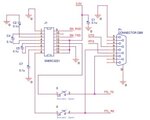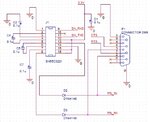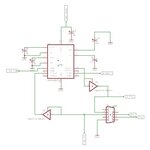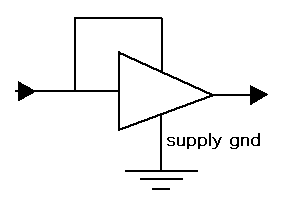PRASAN DUTT RAJU
Junior Member level 1
I,m designing USB to RS232 converter. For RS232 voltage level conversion I'm using two separate methods, one by using IC & other by using transistor converter circuit. But at the output as shown in the figure I need only one line Normally open switch as shown in the figure. The RS232 port should get the voltage from TTL without any interfere but when it gets some voltage from IC used here it should be closed.

What circuitry should I use in place of Normally open switch & will there be any problem of loading if switch is closed?

What circuitry should I use in place of Normally open switch & will there be any problem of loading if switch is closed?


